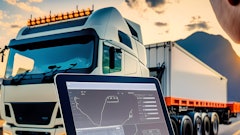
Digital tools cannot optimize inventories and build a resilient supply chain.
Digital tools in the right hands and used in the right way can significantly help optimize inventories and the building of a resilient supply chain. This is not just an idle distinction. Truly understanding it makes all the difference in getting value from your supply chain technology.
There is a range of powerful supply chain technology on the market, with ever-improving functionality, but a common finding is that it doesn’t really move the needle when it comes to inventory levels. This also has implications for supply chain resilience.
Key Elements of Supply Chain Resilience
Resilience can be thought of in two ways: setting yourself up to avoid disruption in the first place and being able to handle disruption when it comes.
Many of the key factors of supply chain resilience are strategic decisions, such as proximity of supply, diversity of supply, capacity redundancy or geographic footprint. Digital tools make it easier than ever to identify sources of supply, model different scenarios and weigh up risks, although you still need to do the fundamental risk assessments yourselves.
One element of resilience is inventory, although it is perhaps over-relied on as a lever. Safety stock, properly speaking, is sized to deal with expected variability on both demand and supply sides. Anything over and above that, we term contingency stock: it is there precisely to deal with unexpected shocks to the supply chain. Contingency stock is appropriate for some types of inventories, such as critical medical supplies. It is inappropriate for others, such as cut flowers.
Inventory should be an element of your resilience strategy, but not the bulk of it. Deliberate overstocks lead to financial and environmental waste and excess inventories clog up warehouses and production schedules, reducing agility. A better resilience approach is to make yourself as agile and able to respond to changing circumstances as possible and use contingency stocks judiciously.
Once disruption is upon you, the benefits of having all of the structural resilience elements in place will immediately become apparent. At the same time, the ability to know what inventories you have where in close to real time, as well as the ability to harmonize information flows up and down your supply chain quickly and accurately, becomes incredibly valuable. A lot of organizations have made significant progress in this respect over the last 5 years thanks to digital platforms that pull together data from previously disparate systems and/or combine internal data with external data feeds.
Inventory Optimization
Inventory optimization is almost a separate topic from supply chain resilience. You could have inventories that are optimized without having a resilient supply chain and vice versa. But here we are being precise in our use of the term inventory optimization. An optimization calculation will tell you how much inventory you need given your particular situation and constraints. A broad resilience approach, as above, will also seek to shape some of those constraints.
Very few organizations have inventories that are objectively anywhere close to optimized. A lot of digital tools, especially planning applications, promise inventory optimization but don’t deliver it. In some cases, they don’t really properly even attempt it, they just facilitate or automate elements of the existing planning process, which isn’t geared towards inventory optimization. In other cases, they have various optimization capabilities, but they are not suitable for all circumstances or are not sufficiently understood by planners. In either case, the net result is normally that optimization functionality is under-used or unused and that inventory levels remain much as they were before the digital tools were implemented.
A considerable challenge is complexity. There are different types of inventories, from raw materials through WIP to finished goods, not to mention stock in transit, traded goods, semi-finished goods, and so on. And within those classes each individual item has its own unique characteristics in terms of demand and supply. A true inventory optimization calculation relies on a large number of variables, each of which is constantly subject to change. Moreover, a lot of those variables are represented by data points within various systems that may or may not be accurate.
Although data quality remains an Achilles’ heel, good digital tools can handle a lot of that complexity in a way that most humans would find impossible. However, the complexity is still a barrier. If human planners can’t understand the outputs of advanced planning tools or, worse, know that they’re wrong (usually because of data quality, incorrect use of the tools or limitations in the tools themselves) they will struggle to trust them, however good they are, and in most cases just switch them off or reverse engineer the result they want.
Getting Best Value from Digital Tools
This brings us full circle back to our opening statement. If digital tools are pushed on planning teams, with an expectation that they will somehow magically deliver significantly improved inventory performance, let alone inventory optimization, organizations are at a high risk of being disappointed with the results.
Where the digital tools add real value is where they are understood to be just one element of a planning process and approach that most likely needs major adjustment if inventories are to be optimized. While eventually it may be possible for planning tools to automate parts of the planning process, a more realistic objective at the moment is to use your digital tools for greater insights and to complement the work your planners are doing.
Before embarking on a digital transformation, it is important to understand precisely what you are trying to fix (what outcomes you want to achieve), what is holding you back today (what needs fixing) and, only then, what people, processes and tools you need to achieve that change. This used to be the standard way of implementing sustainable business transformations. In our eagerness to embrace the undoubtedly wonderful advances in technology, we shouldn’t forget it is only one part of the solution.
Putting a scalpel in the hands of a bricklayer doesn’t make them a surgeon, so don’t be surprised if you still get a wall.




















